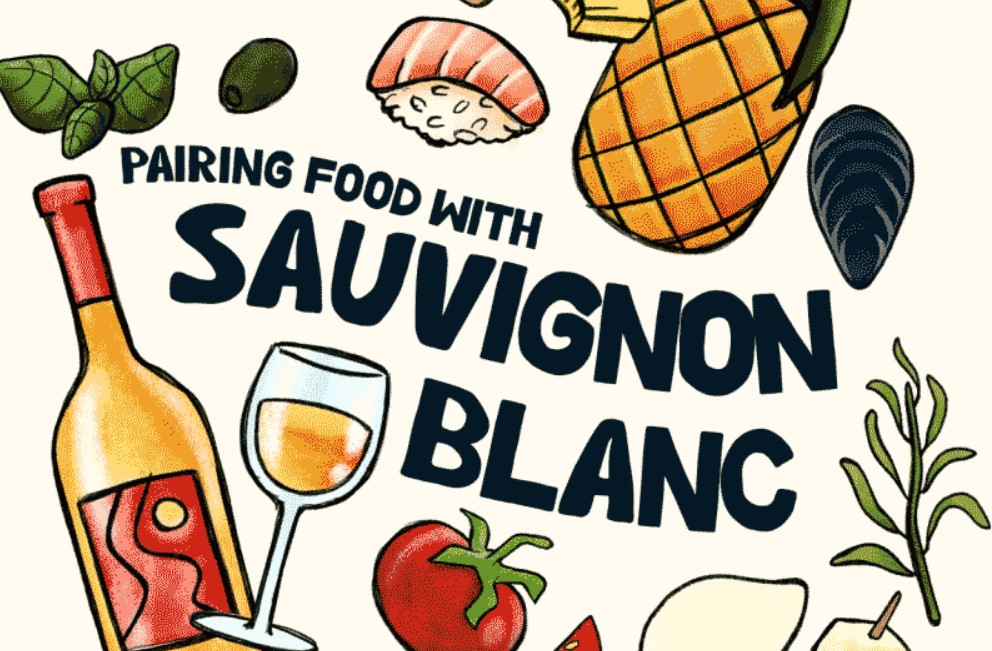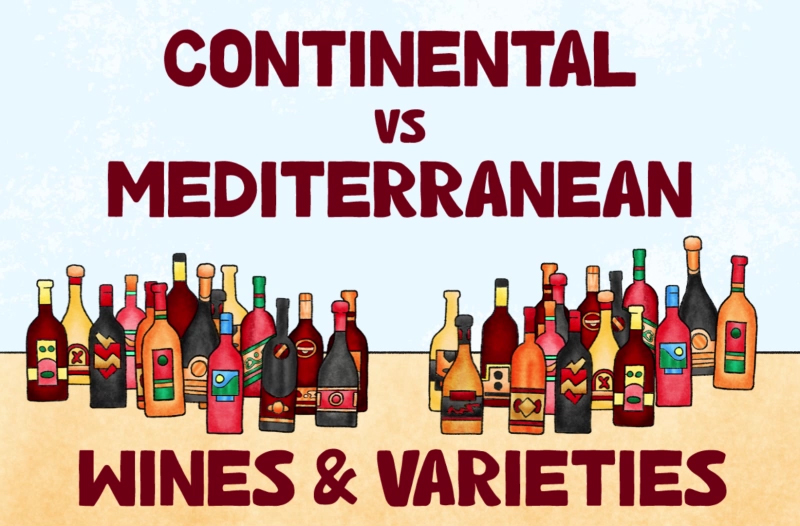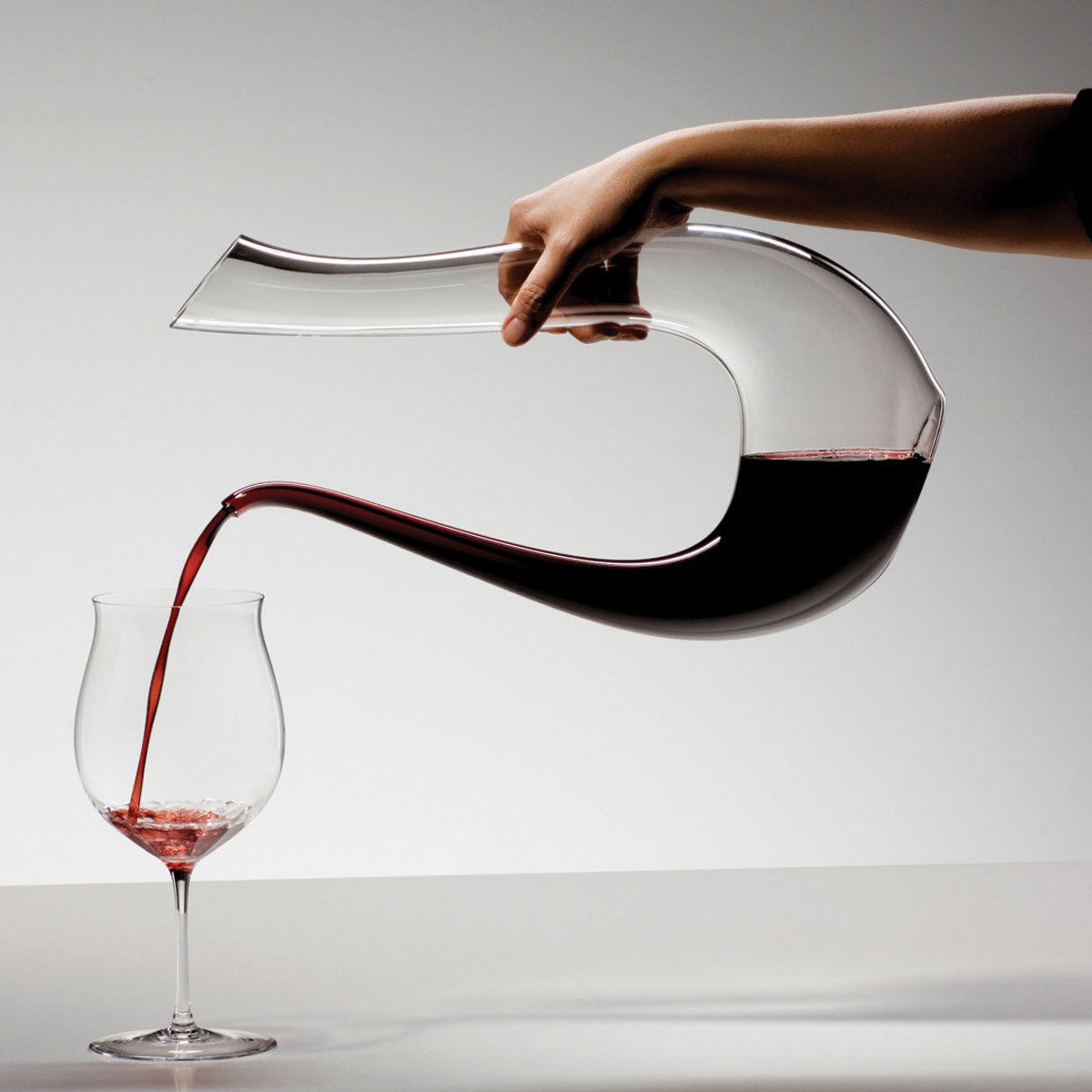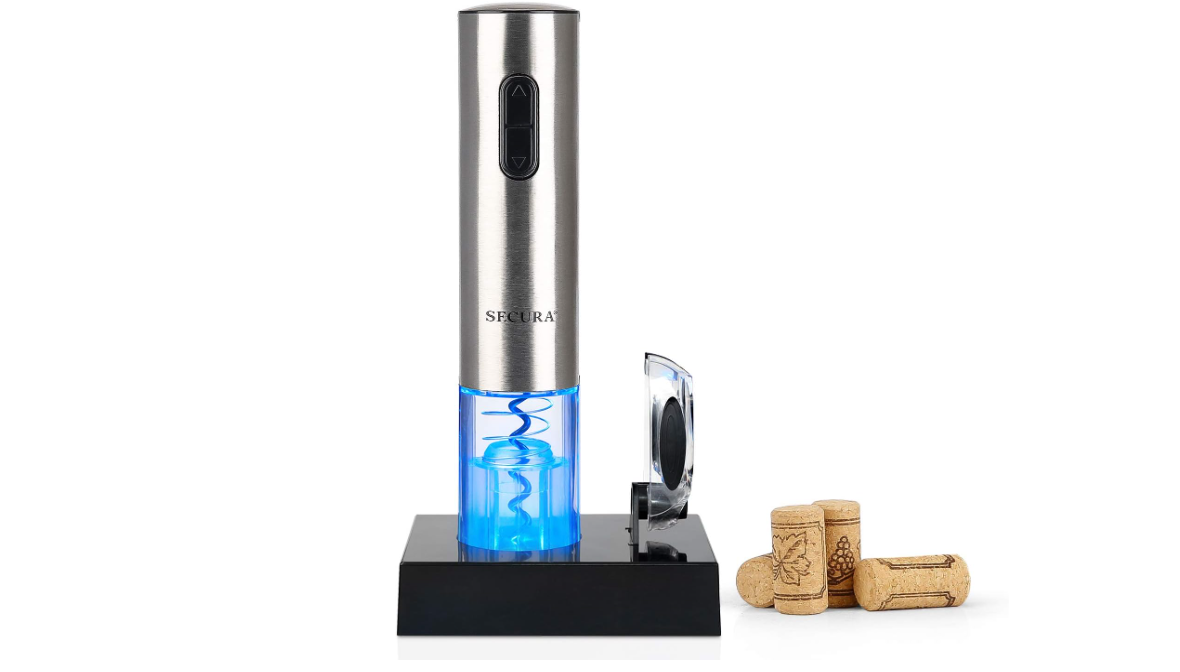Sauvignon Blanc: Unlocking 10 Mind-Blowing Facts
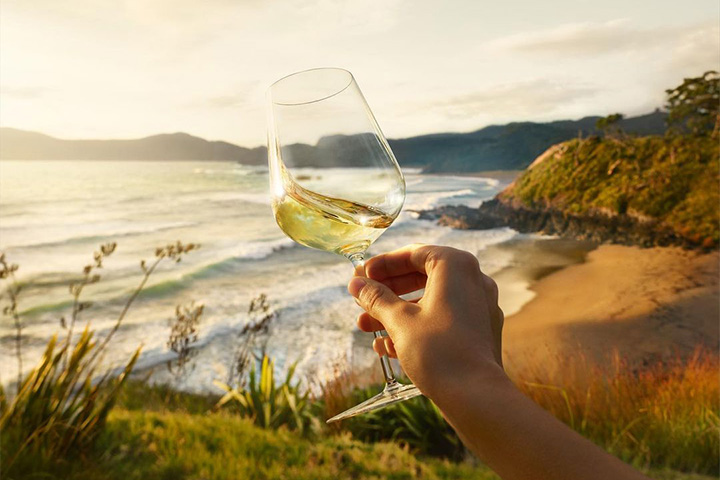
Sauvignon Blanc is a versatile and captivating white wine grape that has garnered a massive following among wine enthusiasts worldwide. With its unique flavors and storied history, this grape variety has become a favorite for many. In this article, we will delve deeper into the world of Sauvignon Blanc and unlock ten mind-blowing facts about this exceptional grape variety.
10 mind-blowing facts about Sauvignon Blanc
Join us on a journey to uncover the wonders of Sauvignon Blanc. Together, we will delve into the intricacies of this grape variety and uncover the ten fascinating facts about Sauvignon Blanc that will leave you in awe.
1. Global prowess
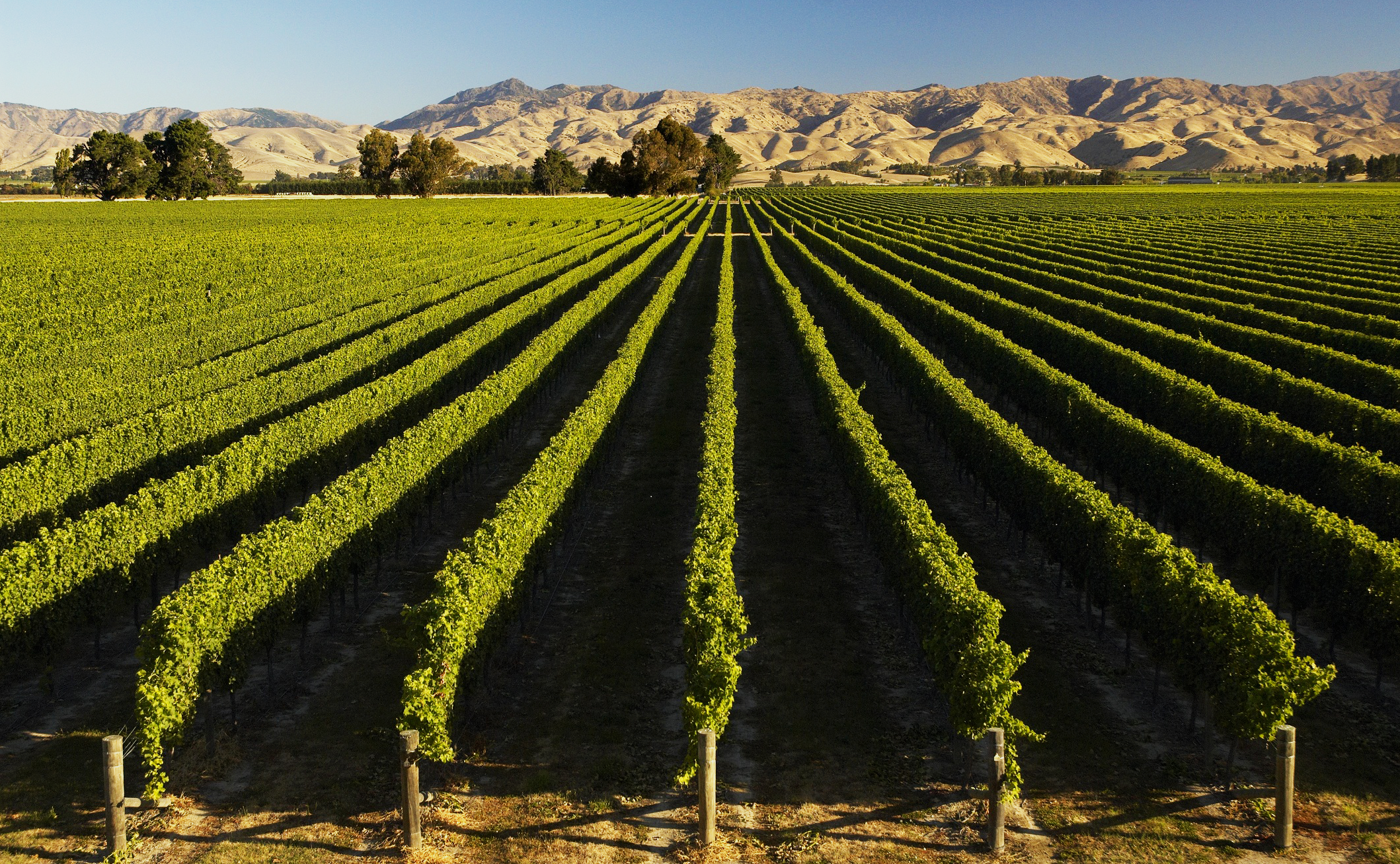
Sauvignon Blanc’s popularity extends far beyond its homeland in France’s Loire Valley. It is now cultivated in diverse wine regions across the globe, including New Zealand, France, California, South Africa, Chile, Austria, and more.
Even Croatia has some exquisite Sauvignon Blanc wines, such as awarded ones:
or
- eco-friendly Bolfan Primus Sauvignon Blanc,
- Korak Sauvignon Kamenice,
- Kota 375 Sauvignon,
- Josić Sauvignon,
- Martin Albus Sauvignon Blanc.
If you’re looking for something different, consider trying Tomac Sauvignon Amfora, a Croatian wine crafted in amphorae that has a cult following.
Each wine imparts distinct characteristics to the wine, resulting in a delightful array of styles for wine lovers to explore.
2. Fumé Blanc alias
Fumé Blanc, is an alias for Sauvignon Blanc, a popular white wine grape variety. The term Fumé Blanc was coined by the renowned California winemaker Robert Mondavi. He used this name as a nod to the Pouilly-Fumé wines from the Loire Valley in France, which share some similarities with Sauvignon Blanc.
Essentially, Fumé Blanc and Sauvignon Blanc are the same grape variety, but the former term is commonly used in California.
Sauvignon Blanc is widely grown and produces crisp, refreshing white wines with notes of citrus, tropical fruits, and sometimes herbaceous or grassy flavors. Fumé Blanc, being the same grape, exhibits similar characteristics, and the name distinction is primarily a marketing strategy to differentiate California Sauvignon Blanc from other regions.
Over the years, the use of the term Fumé Blanc has become less common as Sauvignon Blanc has gained recognition and popularity on its own merit. Nonetheless, some wineries and regions may still use the alias to market their Sauvignon Blanc offerings.
3. Signature flavors
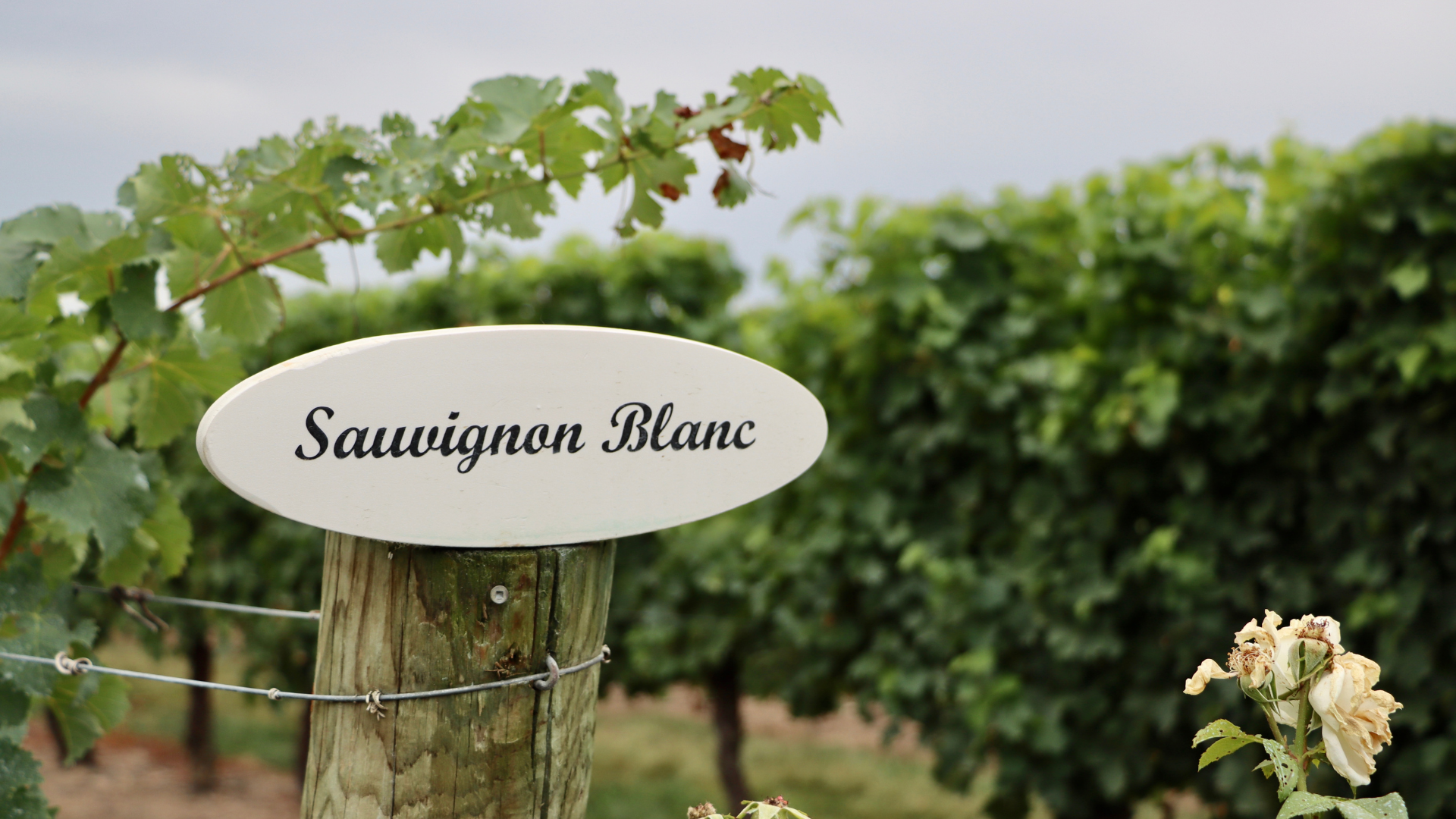
Sauvignon Blanc is renowned for its unique flavor profile, which can include tropical fruit notes like passion fruit, guava, and pineapple, as well as citrus flavors such as lime and grapefruit. The wine’s herbaceous character often exhibits hints of green bell pepper, freshly cut grass, and even boxwood.
Sauvignon Blanc’s aroma is distinctive and diverse. Common descriptors include grassy, herbaceous, citrusy, tropical, and even mineral notes. Some wine enthusiasts find hints of bell pepper or freshly cut green bell pepper, especially in wines from cooler climates. These complex aromas make it an exciting wine to explore and appreciate.
Although grown in various wine regions around the world, some of the most famous and signature flavors are associated with wines from New Zealand, particularly Marlborough. The signature flavors of Sauvignon Blanc include citrusy notes such as lime, grapefruit, and lemon, along with tropical fruit aromas like passion fruit and guava.
These fruity flavors are often accompanied by herbal and grassy undertones, providing a crisp and herbaceous character to the wine. Additionally, some Sauvignon Blancs may have subtle mineral or flinty notes, contributing to their complexity.
Sauvignon Blanc’s flavor profile is often described as zesty, lively, and refreshing, making it a popular choice for warm weather and outdoor gatherings. The acidity in Sauvignon Blanc is generally high, which gives the wine its characteristic tangy and bright nature. It is also a wine that is best consumed young, as its freshness and vibrant flavors are at their peak in the early years after bottling.
4. New Zealand’s dominance
In the latter half of the 20th century, Sauvignon Blanc made a significant impact on the global wine stage, particularly in New Zealand. The Marlborough region of New Zealand gained recognition for producing Sauvignon Blanc wines that stood out with their intense passion fruit, gooseberry, and zesty flavors. This skyrocketed New Zealand to prominence as a leading Sauvignon Blanc producer, rivaling traditional French regions.
New Zealand has become a powerhouse for Sauvignon Blanc production, especially from the Marlborough region.
One of the key reasons behind New Zealand’s excellence in Sauvignon Blanc lies in its diverse terroir. The combination of cool climate, abundant sunshine, and well-drained soils in Marlborough creates the ideal conditions for Sauvignon Blanc grapes to thrive. The region’s terroir imparts distinct characteristics to the wine, such as vibrant acidity, intense fruit flavors, and a pronounced herbaceous aroma.
Marlborough is the primary region for Sauvignon Blanc production in New Zealand, accounting for over 90% of the country’s output. This region’s dominance in production has led to New Zealand’s overall dominance in Sauvignon Blanc exports, with approximately 86% of the country’s wine exports being Sauvignon Blanc. However, other regions in New Zealand, such as Hawke’s Bay, Nelson, and Canterbury, also produce notable Sauvignon Blanc wines.
5. Food pairing versatility
Sauvignon Blanc is a versatile white wine known for its crispness, aromatic qualities, and citrus flavors. It is considered one of the most food-friendly white wines due to its ability to pair well with a wide range of dishes.
Some popular food pairings with Sauvignon Blanc include seafood, such as grilled shrimp and scallops, as well as chicken dishes. The wine’s herbaceous and grassy notes make it an excellent companion for green vegetables and salads, including fruit salads and grain-based salads like tabbouleh. Sauvignon Blanc also pairs nicely with tangy cheeses.
In addition to the mentioned pairings, the wine goes well with herb-forward sauces like pesto, chimichurri, and mojo sauce, enhancing the overall dining experience. Its high acidity helps to cut through rich and oily dishes, making it a suitable choice for various cuisines.
For a more substantial meal, Sauvignon Blanc can be paired with grilled chicken or fish. The wine’s citrusy notes complement these dishes, creating a harmonious flavor profile.
We have provided comprehensive recommendations for pairing Sauvignon Blanc with food. Take a look and experiment with pairing your favorite bottle with different dishes.
6. Ancient origins, modern glory
Research conducted by INRA Montpellier and Domaine de Vassal in France has provided evidence that Sauvignon, the well-known grape cultivar, is a descendant of Savagnin Blanc from the Jura region. The Jura region is located in eastern France and is renowned for producing Savagnin Blanc, a white grape variety used to make the traditional Vin Jaune wine.
The Domaine de Vassal, where the research was conducted, is a grapevine collection site established in 1876 and later relocated to the Vassal Estate in 1949. The collection at Vassal includes a wide variety of grape germplasm, making it a significant resource for studying the genetic diversity and history of wine grapes.
It is worth noting that ongoing research is still exploring the origins of Sauvignon, and further studies might continue to refine our understanding of its ancestry and genetic relationships.
Hailing from France’s picturesque Loire Valley, Sauvignon Blanc has been cultivated and cherished for centuries. The name “Sauvignon” derives from the French word “sauvage,” which translates to “wild,” alluding to the grape’s untamed origins and natural character.
Through generations of cultivation and winemaking, Sauvignon Blanc’s identity evolved, and it acquired its now-familiar name, “wild white.” This moniker encapsulates the essence of the grape, reminding us of its raw and vibrant nature that has charmed wine enthusiasts worldwide.
7. Sancerre vs. Pouilly-Fumé: A French duel
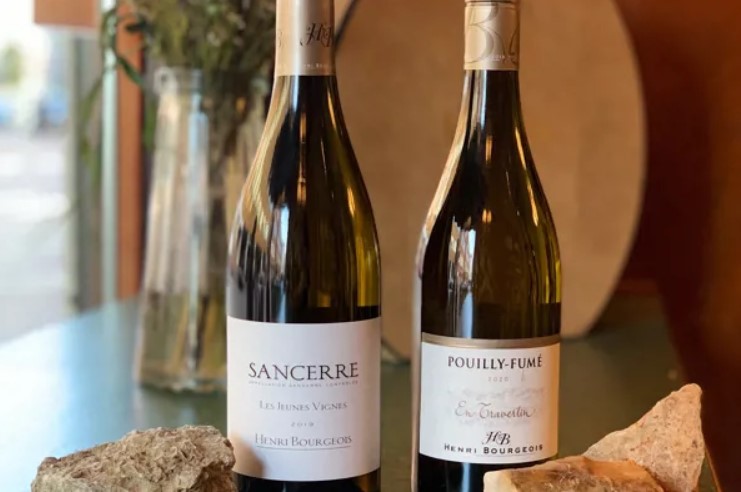
France’s Loire Valley is renowned for producing exceptional Sauvignon Blanc wines, with Sancerre and Pouilly-Fumé being two of the most famous expressions. These wines are highly regarded for their elegant, mineral-rich taste and impressive ability to age, highlighting the grape’s finesse and complexity.
Sancerre wines tend to be very green on the nose, with elegant and refined characteristics. They are often described as racy and crisp with a lean profile. On the other hand, Pouilly-Fumé wines have a smoky, flinty and mineral quality with a slightly rounder body. They are a bit broader and softer than Sancerre, with less vibrant and aromatic features.
The terroir plays a significant role in shaping the differences between these wines. Sancerre is known for its limestone soils, which contribute to the wine’s elegance and fresh green flavors. In contrast, Pouilly-Fumé is characterized by flint soils, adding a distinct smokiness to the wine and influencing its mineral characteristics.
Sauvignon Blanc from both regions offers a wide aromatic palette, showcasing complex and multiple flavors. Sancerre and Pouilly-Fumé wines typically exhibit notes of citrus, green apple, gooseberry, and sometimes tropical fruits, but with different expressions due to their unique terroirs.
8. Iconic blends
Sauvignon Blanc, a versatile grape, when blended with other grapes, can result in exciting and complex wines.
One of Sauvignon Blanc’s most common blending partners is Semillon, especially in regions like Bordeaux, where this combination originated. The blend of Sauvignon Blanc and Semillon can produce wines with a broader mouthfeel, more rounded flavors, and sometimes notes of honey or wax.
In some regions, Sauvignon Blanc is also blended with other white grape varieties to enhance its character. For example, some winemakers blend Sauvignon Blanc with Muscadelle to add floral and aromatic qualities to the wine.
Additionally, Sauvignon Blanc is sometimes used with other white grapes to create Bordeaux Blanc, a blend that typically includes Sauvignon Blanc, Semillon, and other white grape varieties.
Another iconic blend is found in the Margaret River region, where Sauvignon Blanc and Semillon are combined to create a classic Australian wine style. These wines are often vibrant with citrus and tropical fruit flavors.
The blending of Sauvignon Blanc with other grape varieties allows winemakers to showcase their creativity and craft wines that express the unique terroir of the region while offering a diverse range of flavors and aromas.
9. A parent of Cabernet Sauvignon
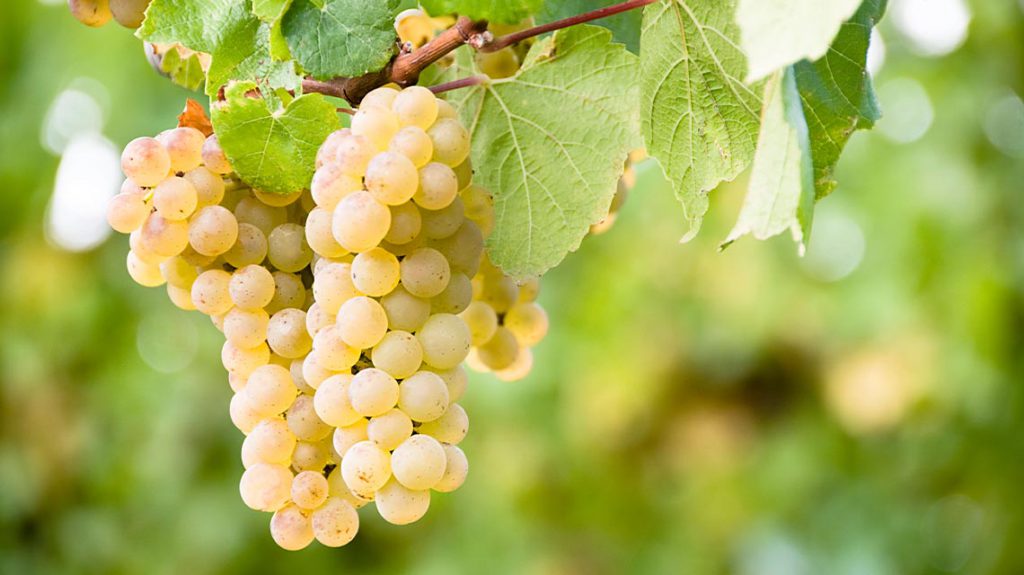
Sauvignon Blanc has played a significant role in parenting some renowned grape varieties through natural crossing. Through spontaneous crossings with other grape varieties, Sauvignon Blanc has contributed its genetic makeup to create some of the most celebrated wines in the world.
One of the most notable offspring of Sauvignon Blanc is Cabernet Sauvignon. This iconic red wine grape variety emerged from a spontaneous crossing of Sauvignon Blanc and Cabernet Franc. The discovery of Cabernet Sauvignon, with its rich and bold characteristics, transformed the wine world and continues to be a staple in vineyards across the globe.
Chenin Blanc and Sauvignon Blanc, two popular white grape varieties, share an interesting genetic connection through their parentage. According to DNA analyses conducted in 1997, both Chenin Blanc and Sauvignon Blanc are siblings, with Savagnin as their parent. Savagnin, an ancient grape variety, remains the common genetic origin for these two distinct grapes, although the identity of the other parent in their lineage remains unknown.
Grüner Veltliner and Sauvignon Blanc share a significant genetic connection as siblings through their parentage. According to DNA analysis, Grüner Veltliner is a half-sibling of Sauvignon Blanc, with both varieties having Savagnin (also known as Traminer) as one of their parents.
Furthermore, the lesser-known Verdesse, found primarily in the Savoie region of France, is another progeny of Sauvignon Blanc. Although less widely planted, Verdesse is cherished for its refreshing and aromatic wines.
Beyond these well-known varieties, Sauvignon Blanc has also been a crossing partner for several other grape varieties, including
- Agorra,
- Arriloba,
- Golia,
- Incrocio Bruni 54,
- Misket Sungurlarski,
- Sauvignon Cita,
- Sauvignon Gryn, and more.
Each of these crossings brings forth unique characteristics and flavors that contribute to the diversity of the wine world.
10. Barrel-aged Sauvignon Blanc
Traditionally, Sauvignon Blanc is aged in stainless steel tanks to preserve its vibrant fruitiness. However, a growing trend among winemakers involves barrel aging, which imparts subtle oak-driven flavors to the wine. The result is a more complex and richer expression of Sauvignon Blanc, showcasing the marriage between bright fruit and delicate oak nuances.
The success of New Zealand’s Sauvignon Blanc can also be attributed to the innovative and skilled winemakers in the country. They continuously explore new techniques to maintain the freshness and distinct character of the wine while also experimenting with different styles, such as oak-aged Sauvignon Blanc, to cater to diverse consumer preferences.
Conclusion
In conclusion, Sauvignon Blanc is a grape variety with an illustrious history and a remarkable ability to adapt to diverse terroirs. Its long history, diverse flavors, and global appeal have made it a staple in wine lists and personal collections worldwide.
Its wide range of flavors and versatility in food pairings make it a favorite among wine enthusiasts worldwide. Whether you prefer the refined elegance of a Sancerre or the tropical allure of a New Zealand Marlborough, exploring the many facets of Sauvignon Blanc is an adventure that promises delightful surprises at every turn.
Embrace the wine’s rich heritage, and allow your palate to savor the mind-blowing essence of this exceptional grape.
Our Expertise
Valentina Silovic is an experienced sommelier and content creator with over a decade of expertise in the wine industry. She has worked in various settings, from luxurious hotels to cozy wine bars, and has explored the grandest wineries in Croatia, tasting and discussing an uncountable number of bottles along the way.
Want to meet the team behind Wine & more, seek recommendations, and discover in-depth insights into our product testing and reviews? Click here now!



